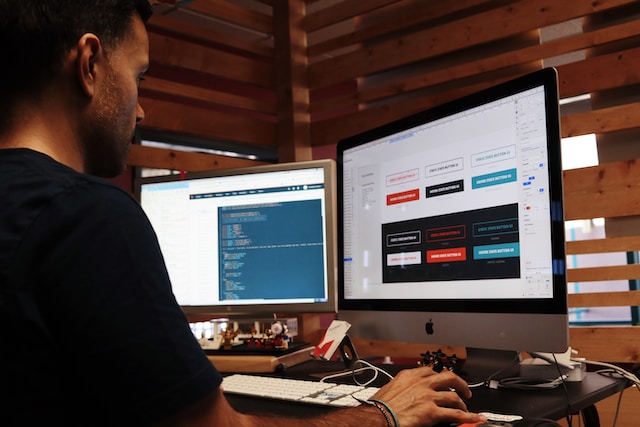
Delving Into Modal Windows: An Essential Web Design Element
Modal windows, simply referred to as modals, have revolutionized web interfaces. Coined from the word ‘modal’ — a type of window that requires users to interact with it before returning to the operating system — modals have a similar functionality in the web design landscape. They are secondary overlay windows that temporarily take precedence over the primary interface, demanding immediate interaction from users. The foundation of their function lies in the fact that they act as interruptions to capture the user’s full attention, ensuring a desired action is taken or a crucial piece of information is acknowledged.

Tracing the Utility of Modals
Modal windows are far from decorative elements in a webpage; they are functional components that serve specific purposes.
- Capturing Information: When a website wishes to capture user information, it often uses a modal with a simple form. The user interaction could be as straightforward as signing up for a newsletter or providing feedback. By utilizing a modal window, the webpage ensures that the user’s attention is focused entirely on providing this information;
- Focusing User Attention: Sometimes, a web page may want to highlight specific information or make the user aware of certain elements, such as terms and conditions or crucial updates. Modals are perfect for such situations, as they command the user’s undivided attention;
- Content Display: Modal windows are an excellent tool for showcasing supplementary content that wouldn’t comfortably fit within the confines of the main webpage. A good example of this is when modals are used to display enlarged images in a gallery;
- Workflow Control: In multi-step processes, modals can be used to segment workflow into manageable parts, thus enhancing user experience.
Dissecting Modal Anatomy: Key Components
Modal windows, despite their varying designs, have a few core components. A comprehensive understanding of these parts will help in both the design and evaluation of effective modals:
- Overlay: This is the semi-transparent layer that covers the webpage content when a modal window is active. The overlay’s primary function is to shift focus from the main content to the modal window;
- Content Area: As the name suggests, this is the primary container for the modal content. This area can contain anything from images, text, or forms, depending on the modal’s purpose;
- Title: The title serves to succinctly describe the purpose or context of the modal. A clear and concise title is key for effective communication;
- Action Buttons: Modals typically have at least one action button to facilitate user interaction. These buttons could range from ‘Submit’, ‘OK’, ‘Cancel’, or ‘Yes’ and ‘No’, among others, depending on the intended action;
- Close Icon: This is a crucial component of a modal window. It is typically an ‘X’ icon located in the top right corner of the modal, offering users an easy way out if they want to dismiss the modal.
Key Components of a Modal Window
| Component | Description |
|---|---|
| Overlay | Semi-transparent layer that covers the webpage content when a modal window is active. |
| Content Area | Primary container for the modal content. Can contain anything from images, text, or forms. |
| Title | Describes the purpose or context of the modal. Should be clear and concise. |
| Action Buttons | Facilitate user interaction. Could range from ‘Submit’, ‘OK’, ‘Cancel’, or ‘Yes’ and ‘No’. |
| Close Icon | Typically an ‘X’ icon located in the top right corner of the modal. Offers users an option to close the modal. |
The Modal Design Paradigm: Practices to Uphold
While modal windows can significantly enhance user experience, if designed poorly, they can also disrupt user flow and lead to dissatisfaction. It’s essential to observe the following best practices to ensure that your modal design enhances rather than hinders the user experience:
- Responsiveness: With the surge in mobile device usage, ensuring that your modal windows are responsive and display correctly on all screen sizes is non-negotiable;
- Accessibility: Modal windows should be accessible to all users, including those using assistive technologies. Include features such as keyboard navigation and proper ARIA roles to make your modals accessible;
- Purposefulness: Don’t use a modal for the sake of it. They should serve a purpose that is beneficial to the user. Overuse of modals can frustrate users and lead to site abandonment;
- Simplicity: Keep the design and content of your modal window simple and easy to understand. Users should be able to interact with the modal quickly and then return to their original task;
- Escape Route: Always provide an easy way to close the modal window. This can be through a ‘Close’ button, ‘X’ icon, or by clicking outside the modal area;
- Animation and Transition: Incorporating subtle animations and transitions can improve the user experience by making the modal entrance and exit less jarring.
Conclusion
The judicious use of modals in web design can provide an engaging, focused, and user-friendly experience. Modals, with their unique ability to grab user attention and provoke action, remain an integral part of the designer’s toolkit, shaping the contours of digital interactions. Through understanding their fundamental purpose, inherent components, and best practices, we can leverage modals to sculpt seamless user journeys.
FAQS
Modals can potentially slow down the webpage if they are poorly implemented or if they contain heavy content such as large images or videos. However, if implemented properly, they should have a negligible impact on load speed.
While modals themselves don’t have a direct impact on SEO, ensuring that they are accessible, user-friendly, and don’t contain duplicate content can help your SEO efforts.
The main difference lies in user interaction. A modal window demands immediate user interaction and blocks interaction with the rest of the site until it’s dismissed. On the other hand, a modeless window allows users to interact with other parts of the site while it’s open.